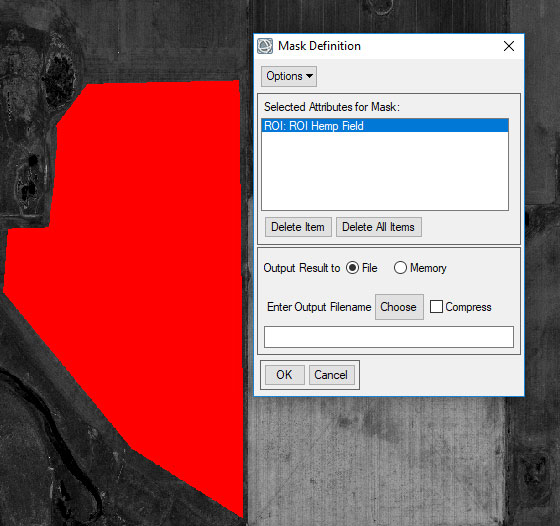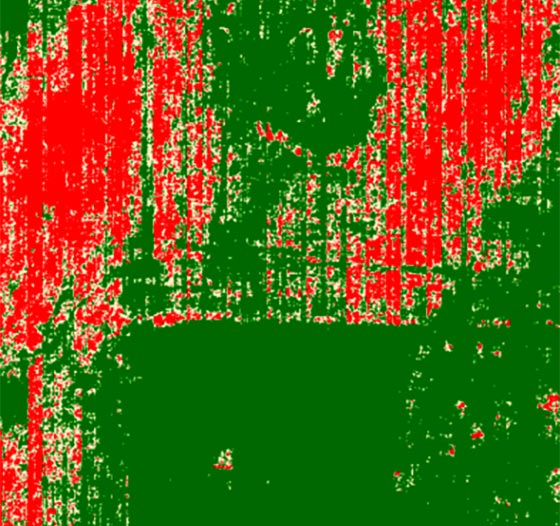Looking for Hemp Hotspots
Andrew Fore
The recent passing of the Agriculture and Nutrition Act of 2018 (Farm Bill) includes many important developments for the future of agriculture in the United States. One particularly interesting change is the legalization of Hemp. While there will still be many federal and local limitations on how farmers can grow Hemp, the addition of legal Hemp into the U.S. agriculture market unlocks a new world of opportunity for this versatile plant. Learning more about this change in the U.S. agricultural landscape sparked my curiosity as to how an analysis using ENVI® Crop Science tools would look on a Hemp field. To do this, I decided to run the simple yet useful Find Hotspot tool.
I ran the Find Hotspot tool to look for areas within a Hemp field that are relatively different than the rest of the image. To start the analysis, I used ENVI’s draw ROI tool to create a spatial subset of the image to include only the field’s extent. The next step in the process is to mask out all non-vegetation (soil) pixels in an image. After this is complete, I choose a single band raster for input and entered a distance value for the calculation of local mean values around each pixel. The reason why a distance value is important in finding hotspots is determined by the Getis-Ord Gi* (Getis and Ord, 1992) equation. This equation looks for statistically significant trends or anomalies within a raster on a pixel by pixel basis. Another important step in finding hotspots within a field is using a vegetation index. Using a combination of the broadband greenness vegetation index and color slicing, the vigor and health of the Hemp crops are highlighted.
The resulting image shows variable health across the Hemp field, with the color Red indicating negative values (poor health) and the color Green showing positive values (Healthy). This simple analysis can help agronomists, advisory services or anyone interested in the relative health of a field.
As remote sensing technologies continue to advance, it is important that new crop markets like Hemp utilize the powerful tools available in-order-to maximize yields. Agronomists and advisory services can take advantage of ENVI Crop Science to enhance understanding of crop health and the external factors that influence growth and production. As the Hemp industry expands its acreage and influence, it will be interesting to watch how remote sensing and geospatial tools are used for better crop management.
I encourage anyone who is interested in learning more about our precision agriculture capabilities to check out our Documentation center for more detailed information on ENVI Crop Science tools.

Mask of Hemp Field, Masking can be useful for excluding certain pixels from an image during analysis.

Hotspot results from North American Hemp Field